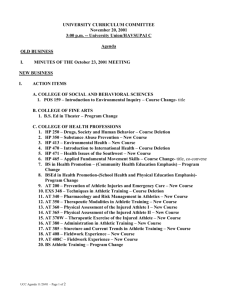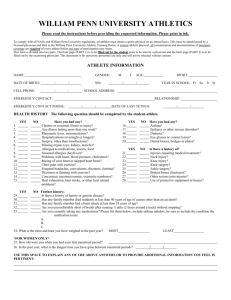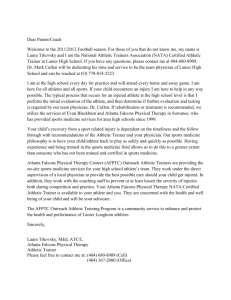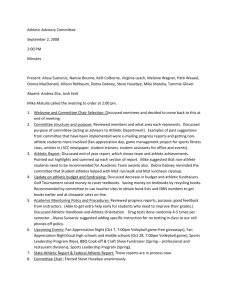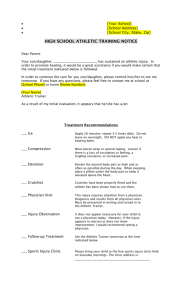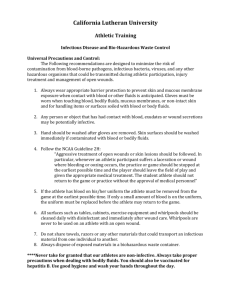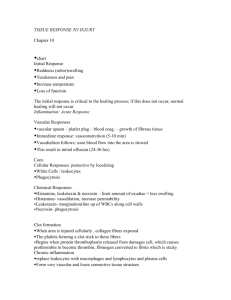NATA Exertional Heat Information
advertisement
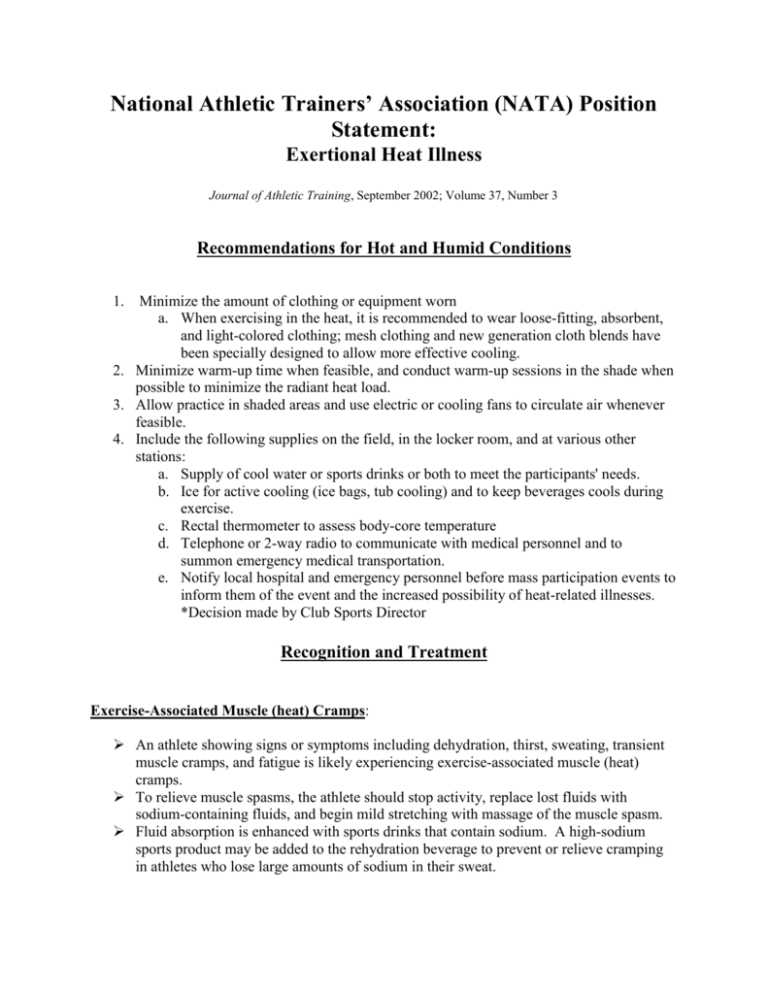
National Athletic Trainers’ Association (NATA) Position Statement: Exertional Heat Illness Journal of Athletic Training, September 2002; Volume 37, Number 3 Recommendations for Hot and Humid Conditions 1. Minimize the amount of clothing or equipment worn a. When exercising in the heat, it is recommended to wear loose-fitting, absorbent, and light-colored clothing; mesh clothing and new generation cloth blends have been specially designed to allow more effective cooling. 2. Minimize warm-up time when feasible, and conduct warm-up sessions in the shade when possible to minimize the radiant heat load. 3. Allow practice in shaded areas and use electric or cooling fans to circulate air whenever feasible. 4. Include the following supplies on the field, in the locker room, and at various other stations: a. Supply of cool water or sports drinks or both to meet the participants' needs. b. Ice for active cooling (ice bags, tub cooling) and to keep beverages cools during exercise. c. Rectal thermometer to assess body-core temperature d. Telephone or 2-way radio to communicate with medical personnel and to summon emergency medical transportation. e. Notify local hospital and emergency personnel before mass participation events to inform them of the event and the increased possibility of heat-related illnesses. *Decision made by Club Sports Director Recognition and Treatment Exercise-Associated Muscle (heat) Cramps: An athlete showing signs or symptoms including dehydration, thirst, sweating, transient muscle cramps, and fatigue is likely experiencing exercise-associated muscle (heat) cramps. To relieve muscle spasms, the athlete should stop activity, replace lost fluids with sodium-containing fluids, and begin mild stretching with massage of the muscle spasm. Fluid absorption is enhanced with sports drinks that contain sodium. A high-sodium sports product may be added to the rehydration beverage to prevent or relieve cramping in athletes who lose large amounts of sodium in their sweat. Exercise-Heat Exhaustion: If the athlete's temperature is elevated, remove excess clothing to increase the evaporative surface and to facilitate cooling. Remove the athlete to a cool or shaded environment if possible Start fluid replacement Transfer care to a physician if intravenous fluids are needed or if recovery is not rapid and uneventful Exertional Heat Stroke Lower the body-core temperature as quickly as possible o Remove clothes and equipment and immerse the body (trunk and extremities) into a pool or tub of cold water. Aggressive cooling is the most critical factor in the treatment of exertional heat stroke Monitor the temperature during the cooling therapy and recovery (every 5 to 10 minutes). If a physician or athletic trainer is present to manage the athlete's medical care on site, then initial transportation to a medical facility may not be necessary, therefore immersion can continue uninterrupted. If a physician or athletic trainer is not present, aggressive first-aid cooling should be initiated on-site and continued during emergency medical system transport and at the hospital until the athlete returns to normal body temperature. Other methods can be used to reduce body temperature such as: o Removing the clothing o Sponging down the athlete with cool water and applying cold towels o Applying ice bags to as much of the body as possible, especially the major vessels in the armpit, groin, and neck o Providing shade Returning to Play The athlete must be cleared by a physician before returning to athletic participation. The return to full activity should be gradual and monitored by a physician or athletic trainer. References National Athletic Trainers’ Association Position Statement: Exertional Heat Illnesses, Journal of Athletic Training, 2002; 37 (3): 329-343, National Athletic Trainers’ Association, Inc. Authors: Helen M. Binkley; Joseph Beckett; Douglas J. Casa; Douglas M. Kleiner; Paul E. Plummer

